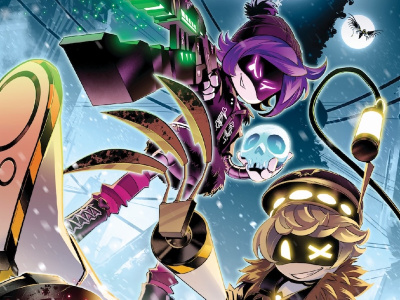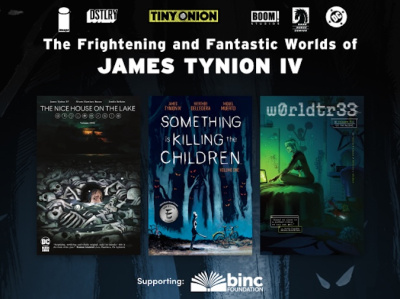A few weeks ago at the San Diego Comic-Con, we sat down with DC President and Publisher Paul Levitz (DC Senior Vice President Sales and Marketing Stephanie Fierman sat in) for our annual talk about the state of the comic business and DC's place in it. In Part 2, we discuss DC's experiment with weekly comics. In Part 1, we talked about the state of the market for comic books and periodicals, and for Web and phone delivery of comics. In Part 3, we talk about DC's CMX imprint line. And in Part 4, we discuss the future of manga style work produced in the
This takes us into another area we wanted to ask about -- this grand experiment of the weekly comic, which DC has tried at least once before. 52 is a very different business model than any of the previous attempts -- a very tightly knit single storyline as opposed to anthologies, which have been a more common way to approach weeklies. Give me, three months in, your evaluation of its success and what that means for the future use of weeklies.
Levitz: I've had a propensity over the course of my career when I thought there was a logical compass point to move in, to try to find solutions to the opportunities. The graphic novel format that we've ended up with for collected editions of comics is the third try that I've made in my career. From the first time I was in a position of any kind of responsibility, I wanted to do something to make the great old stuff available because, as a comic fan, I just thought it would be cool.
The first one was modeled on the European album and lasted for about 2.5 seconds and didn't work. [It was] an experiment with Roger Slifer on Manhunter in '79 or '80. Then we tried a program with Baxter reprints of some of the great series like Green Lantern, Deadman and Swamp Thing in '82 or '83, where the brilliant idea was, 'We can't keep stuff in stock, but maybe every three or four years we can go back, have good negatives, and re-reprint these things in serial form a little thicker.' That was a lead balloon. Then we went to the beginnings of the graphic novel format with Dark Knight in '86. Although it didn't become a viable business of scale for many years, it was a relatively viable business model from early on and happily has found the answer.
I think the weekly is kind of in the same list in my head. I've looked for 20 years at the consumer who comes into the comic shop every week and said, 'There ought to be some combination of content and format that can take advantage of that weekly pace and make it work.'
Action Comics Weekly was a notable failure. The creative format we used in Superman books for a bunch of years under Mike Carlin where the stories flowed week to week to week was a more successful version of it, a subtler one because it wasn't labeled as a weekly, but it still was an attempt to do that. It's very difficult to work creatively and never expanded much beyond that to a wider range.
This is another experiment in that direction, thankfully a very, very successful one. I think part of the reason for success is Dan [Didio] brought to it an approach to creating new material that was modeled on his TV experience using team writing and building it so the creative people were not so much interchangeable parts, but teamed parts so that a consistent product could come out week after week, but without the reader paying attention to the label of which member of the team was doing which job which day. It felt fairly seamless.
So far we've been thrilled with the success and the numbers are holding at a level significantly higher than we had initially budgeted for the project. Retailers I've talked to here feel like the returnability schemes that we'd come up with to give them insurance helped them to order properly, but they don't have stacks they want to send back as the return window kicks in, it seems like it was a win-win for everybody.
It's hard as hell to do, creatively, to make that work. Of course, we're only a quarter of the way to having it done. I don't know how replicable this is, it consumes a lot of resources to pull off and it worked because it came off Infinite Crisis and One Year Later and lots of not unique, but unusual editorial ingredients in the launch so I don't know if I can sit here and say, 'We'd like two of those next year,' without having mass suicides on the editorial floor. But I think it's been good for us and good for the business, and hopefully it will have some ability to serve as a model for the future.







